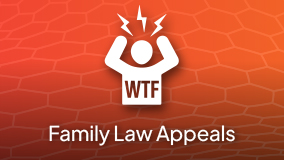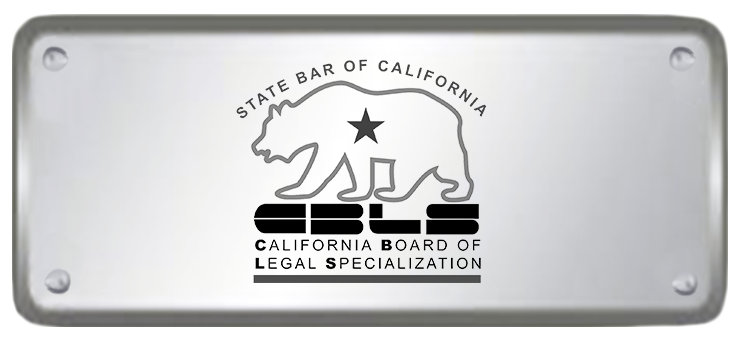RESTRAINING ORDERS IN CALIFORNIA
Restraining orders in California, also known as protective orders, are legal orders issued by a court to protect individuals from physical or emotional abuse caused by another person. Each type of restraining order provides different levels of protection and has specific requirements for obtaining them. The different kinds of restraining orders in the state of California include a Criminal Protective Order (CPO), a Domestic Violence Restraining Order (DVRO), a Civil Harassment Restraining Order (CHRO), an Emergency Protective Order (EPO), and an Elder or Dependent Adult Abuse Restraining Order (EARO).
Emergency Protective Orders (EPO)
EPOs are issued by law enforcement officers (after judicial approval) when responding to an incident of alleged abuse and domestic violence and provide immediate protection for victims. EPOs are issued for a period of seven calendar days or five court days, whichever is less. The EPO is intended to provide the victim of alleged abuse or domestic violence with immediate yet short-term protection while they petition the court for a restraining order.
Temporary Restraining Orders (TRO)
TROs are issued by the family court on an ex parte basis if there is a qualifying relationship and a factual showing of domestic violence and abuse based upon a preponderance of the evidence. TROs are issued by the civil court on an ex parte basis if there is a factual showing of abuse based upon clear and convincing evidence. TROs are issued for a period of 21-25 days unless continued, at which time there is a hearing. If a “permanent” restraining order (DVRO/CHRO) is issued after the hearing, it can have a duration of up to five years.
Criminal Protective Order (CPO)
CPOs are issued by the court in a criminal prosecution that involves allegations of assault or other physical violence. CPOs are usually issued upon a motion by the prosecution or on the court’s own motion at an arraignment and typically have an initial duration of up to three years, depending upon the ultimate disposition of the criminal case.
CPOs supersede other restraining orders, such as those issued by the family court, and may contain orders relating to visitation with minor children. While the violation of any restraining order is a serious matter, the violation of a CPO while a criminal case is pending could have significant negative consequences.
Domestic Violence Restraining Order (DVRO)
In California, a Domestic Violence Restraining Order (DVRO) is a court order that prohibits an individual from certain types of actions and interactions with a victim of domestic violence and may include the same provisions for other protected persons, such as minor children of the parties. DVROs are issued after the 21-25 hearing, which occurs in conjunction with the filing of a TRO and are known as “permanent” restraining orders as they can issue for up to five years. DVROs may contain various collateral orders, such as child support orders, custody orders, and property orders. DVROs are issued if there is a preponderance of the evidence of the existence of abuse or domestic violence between persons with a qualifying relationship, and the issuance is necessary to quell such abuse. Abuse is broadly defined in California and encompasses both emotional and physical aspects of abusive conduct.
How to Obtain a DVRO in California
To obtain a DVRO, the petitioning person must have a qualifying relationship with the restrained person, such as a familiar relationship, marriage, or dating relationship. The petitioner must include a detailed factual description of the acts of abuse or domestic that have occurred and the need for a protective order. The court will review the request and may issue a TRO, which provides temporary protection pending the hearing on the TRO. The hearing will be scheduled within 21-25 days to determine whether a DVRO should be issued. At the hearing, the petitioner will have the opportunity to present evidence of the abuse or domestic violence that has occurred, and the respondent will have the opportunity to respond to the allegations and possibly request their own DVRO. If the court finds that abuse or domestic violence has occurred and that a DVRO is necessary to protect the petitioner or other persons, it will issue the order.
Changing an Existing Domestic Violence Restraining Order
It is possible that changes to an existing DVRO may be required, such as if the DVRO contains custody orders, support orders, or other orders where there has been a significant change since the issuance of the DVRO. Likewise, if the parties reconcile and the issues related to abuse have been resolved, such might be a reason to request to modify or terminate a DVRO. If a restrained person disagrees with the allegations of abuse, then a defense to the request for a DVRO must be made prior to its issuance, or an appeal of the DVRO must be taken within the statutorily provided time. Also, a DVRO can be renewed upon application prior to the scheduled end date. This must be requested at least 90 days prior to the expiration of the DVRO, based upon a shoring of subjective apprehension that is objectively reasonable. No new acts of abuse or domestic violence are required, and no violation of the DVRO is required. A renewal can be for either five years or forever.
Civil Harassment Restraining Order (CHRO)
In California, a CHRO is a court order issued from a civil court that prohibits a person from engaging in harassment or other prohibited conduct against the person requesting the restraining order. The primary differences between a CHRO and DVRO are that the CHRO does not require a qualifying relationship between the two parties. Also, the CHRO requires a showing of clear and convincing evidence compared to the preponderance evidence standard of the DVRO. To obtain a CHRO, the petitioner must file a request with the court providing admissible evidence of the respondent’s abusive behavior. The court will then review the request and may issue a temporary restraining order (TRO) on an ex parte basis for 21-25 days. A hearing will be scheduled within 21-25 days of the TRO being issued to determine if a “permanent” CHRO is necessary.
How to Obtain a CHRO in California
To obtain a CHRO, the petitioner must show that the respondent has engaged in harassment, which is defined under California law as a pattern of conduct that is intended to harass, annoy, or alarm another person. This conduct can include:
- Following the petitioner or showing up at their home, workplace, or other places they frequent.
- Making repeated phone calls, sending text messages, or sending emails to the petitioner.
- Posting messages or images about the petitioner on social media.
- Making threats of violence or other harmful behavior towards the petitioner.
- Engaging in other conduct that causes the petitioner to feel threatened or harassed.
Antonyan Miranda has successfully represented countless clients in all types of restraining order matters and has achieved some outstanding results. While many attorneys shy away from this area of the law, Antonyan Miranda prides itself on aggressively representing clients that are involved in these unfortunate situations. Call us at 619-696-1100 to speak with one of our Concierge attorneys, or visit us at www.expertdivorcelaw.com for more information.
FOLLOW US!
RESTRAINING ORDERS IN CALIFORNIA
Restraining orders in California, also known as protective orders, are legal orders issued by a court to protect individuals from physical or emotional abuse caused by another person. Each type of restraining order provides different levels of protection and has specific requirements for obtaining them. The different kinds of restraining orders in the state of California include a Criminal Protective Order (CPO), a Domestic Violence Restraining Order (DVRO), a Civil Harassment Restraining Order (CHRO), an Emergency Protective Order (EPO), and an Elder or Dependent Adult Abuse Restraining Order (EARO).
Emergency Protective Orders (EPO)
EPOs are issued by law enforcement officers (after judicial approval) when responding to an incident of alleged abuse and domestic violence and provide immediate protection for victims. EPOs are issued for a period of seven calendar days or five court days, whichever is less. The EPO is intended to provide the victim of alleged abuse or domestic violence with immediate yet short-term protection while they petition the court for a restraining order.
Temporary Restraining Orders (TRO)
TROs are issued by the family court on an ex parte basis if there is a qualifying relationship and a factual showing of domestic violence and abuse based upon a preponderance of the evidence. TROs are issued by the civil court on an ex parte basis if there is a factual showing of abuse based upon clear and convincing evidence. TROs are issued for a period of 21-25 days unless continued, at which time there is a hearing. If a “permanent” restraining order (DVRO/CHRO) is issued after the hearing, it can have a duration of up to five years.
Criminal Protective Order (CPO)
CPOs are issued by the court in a criminal prosecution that involves allegations of assault or other physical violence. CPOs are usually issued upon a motion by the prosecution or on the court’s own motion at an arraignment and typically have an initial duration of up to three years, depending upon the ultimate disposition of the criminal case.
CPOs supersede other restraining orders, such as those issued by the family court, and may contain orders relating to visitation with minor children. While the violation of any restraining order is a serious matter, the violation of a CPO while a criminal case is pending could have significant negative consequences.
Domestic Violence Restraining Order (DVRO)
In California, a Domestic Violence Restraining Order (DVRO) is a court order that prohibits an individual from certain types of actions and interactions with a victim of domestic violence and may include the same provisions for other protected persons, such as minor children of the parties. DVROs are issued after the 21-25 hearing, which occurs in conjunction with the filing of a TRO and are known as “permanent” restraining orders as they can issue for up to five years. DVROs may contain various collateral orders, such as child support orders, custody orders, and property orders. DVROs are issued if there is a preponderance of the evidence of the existence of abuse or domestic violence between persons with a qualifying relationship, and the issuance is necessary to quell such abuse. Abuse is broadly defined in California and encompasses both emotional and physical aspects of abusive conduct.
How to Obtain a DVRO in California
To obtain a DVRO, the petitioning person must have a qualifying relationship with the restrained person, such as a familiar relationship, marriage, or dating relationship. The petitioner must include a detailed factual description of the acts of abuse or domestic that have occurred and the need for a protective order. The court will review the request and may issue a TRO, which provides temporary protection pending the hearing on the TRO. The hearing will be scheduled within 21-25 days to determine whether a DVRO should be issued. At the hearing, the petitioner will have the opportunity to present evidence of the abuse or domestic violence that has occurred, and the respondent will have the opportunity to respond to the allegations and possibly request their own DVRO. If the court finds that abuse or domestic violence has occurred and that a DVRO is necessary to protect the petitioner or other persons, it will issue the order.
Changing an Existing Domestic Violence Restraining Order
It is possible that changes to an existing DVRO may be required, such as if the DVRO contains custody orders, support orders, or other orders where there has been a significant change since the issuance of the DVRO. Likewise, if the parties reconcile and the issues related to abuse have been resolved, such might be a reason to request to modify or terminate a DVRO. If a restrained person disagrees with the allegations of abuse, then a defense to the request for a DVRO must be made prior to its issuance, or an appeal of the DVRO must be taken within the statutorily provided time. Also, a DVRO can be renewed upon application prior to the scheduled end date. This must be requested at least 90 days prior to the expiration of the DVRO, based upon a shoring of subjective apprehension that is objectively reasonable. No new acts of abuse or domestic violence are required, and no violation of the DVRO is required. A renewal can be for either five years or forever.
Civil Harassment Restraining Order (CHRO)
In California, a CHRO is a court order issued from a civil court that prohibits a person from engaging in harassment or other prohibited conduct against the person requesting the restraining order. The primary differences between a CHRO and DVRO are that the CHRO does not require a qualifying relationship between the two parties. Also, the CHRO requires a showing of clear and convincing evidence compared to the preponderance evidence standard of the DVRO. To obtain a CHRO, the petitioner must file a request with the court providing admissible evidence of the respondent’s abusive behavior. The court will then review the request and may issue a temporary restraining order (TRO) on an ex parte basis for 21-25 days. A hearing will be scheduled within 21-25 days of the TRO being issued to determine if a “permanent” CHRO is necessary.
How to Obtain a CHRO in California
To obtain a CHRO, the petitioner must show that the respondent has engaged in harassment, which is defined under California law as a pattern of conduct that is intended to harass, annoy, or alarm another person. This conduct can include:
- Following the petitioner or showing up at their home, workplace, or other places they frequent.
- Making repeated phone calls, sending text messages, or sending emails to the petitioner.
- Posting messages or images about the petitioner on social media.
- Making threats of violence or other harmful behavior towards the petitioner.
- Engaging in other conduct that causes the petitioner to feel threatened or harassed.
Antonyan Miranda has successfully represented countless clients in all types of restraining order matters and has achieved some outstanding results. While many attorneys shy away from this area of the law, Antonyan Miranda prides itself on aggressively representing clients that are involved in these unfortunate situations. Call us at 619-696-1100 to speak with one of our Concierge attorneys, or visit us at www.expertdivorcelaw.com for more information.





















